Does this sound familiar: You’re about to acquire a bunch of email addresses through a petition or list append but before you do, you create a 3-4 part email welcome series that introduces the new or returning supporter to your organization. You create a series that introduces that person to your organization. You cover a bunch of different program areas and topics because you have people coming in on a number of issues, but you can’t support discrete content tracks for all the sources and issues bringing in new supporters.
You get the names, send the welcome series. You thank them. You invite them to take action on a new issue. Maybe there’s a survey in there too. Then after a few emails, you ask them to donate. You see some gifts trickle in and wonder if those new names will bring in more gifts during your upcoming match campaign or at year-end. You then report on the ROI of this acquisition source with mixed enthusiasm.
What happened?
In short, what happened is the opportunity to engage with someone -- about something they seemingly cared about -- was missed. Some people sign up for things and then forget they did. Others signed up passionate about that one issue, but you’re sending them welcome emails on something different. They lose interest. They stop responding.
What can you do about it?
First, prepare different tracks for your first few emails aligned to the issue a supporter responded. You may need only 2-3 tracks that will align new people into relevant content groups based on the issues they respond to.
Instead of a generic welcome series that everyone else is using, think about the ‘surprise and delight’ you can deliver with targeted messages that play back the specific issue that’s important to the supporter at the time they signed up. Instead of the bland institutional ‘buffet of issues’ email, serve up a tailored 3 or 4 course email series talking specifically about their issue of concern. In the competition of the inbox, you’ll stand out, get more attention and build more loyalty by treating your supporters this way.
Second, upload those new names into Facebook and other social spaces to connect with them there. Use custom audience targeting to align the content you push to them to mirror the issue that sparked them to join you in the first place. Next, look at the data on their interaction with those posts and boosted content to determine what they show interest in – listen to their clicks (or taps) to learn what to send them next. Then use that information to shape what you share next on social and in email.
The punch line is that you have to segment and tailor content to steward that new supporter to deeper commitment. And you can do that best by sending them meaningful and authentic content around what they care about. Meaningful – because it aligns to their values and their concerns, to why they signed up in the first place. Authentic – because it will be personal, show you know them, show your organization listens and responds to what they care about.
Your content should put the supporter first. The person signed up with you for a specific reason. The question that should drive your first communications to them should be, “How do we reflect back what they care about and that they made a good choice in supporting us on that issue?” What you share next – on social, in email and in offline communications - will do better if it is interest-based.
Why is this important?
Given the climate we’re in where nearly every headline provides an opportunity to act, it’s reasonable to expect that people respond to issues that resonate with them and that are most compelling to them. In that moment of caring, of being passionate enough to sign up and take a stand or join your group, you have their attention.
In that critical moment, telling them the story of how they are the hero in supporting that issue they acted upon seals the connection. Response rates are higher when you send interest-based, segmented communications. Conversion is higher when you ask for their next action based on their personal interests. Blasting out messages that tell your organization’s story, provide the laundry list of things you work on, and don’t relate to what they cared about when they took action with you is the easier path. And the path of less effectiveness.
It’s our job as fundraisers, organizers and marketers to build relationships that lead to deeper commitment. Relationships are built on shared interests and shared values. You can demonstrate you care about your supporter relationships from the first contact with them by reinventing how you do ‘the welcome series.’
Rather than thinking about these first touch points from the frame of ‘how do we welcome someone into our organization?” flip it. Ask instead, “How do we reflect back that we know what they care about and that they made a good choice in supporting us on that issue?” Make that first connection -- that you listened and value their contribution to their issue of concern. Build that trust that you care about what they cared about. Then from there you can introduce them to the other parts of your mission and expand their contributions.
We see time and time again that personalized supporter journeys based on issue relevance do better than traditional institutional methods of welcoming. We know it has been daunting, time and resource intensive for most nonprofits to create highly segmented welcome streams mapped to issue interest. That’s why we created Causemo – to put modern technology of interest-based segmentation, automation and content targeting to work for causes. If you need help adding value to the names you’ve already purchased and want your welcome series to deliver higher results, let’s talk about your program. We’d be happy to tell you more about how we’re generating results for our clients and how we can help you too.










